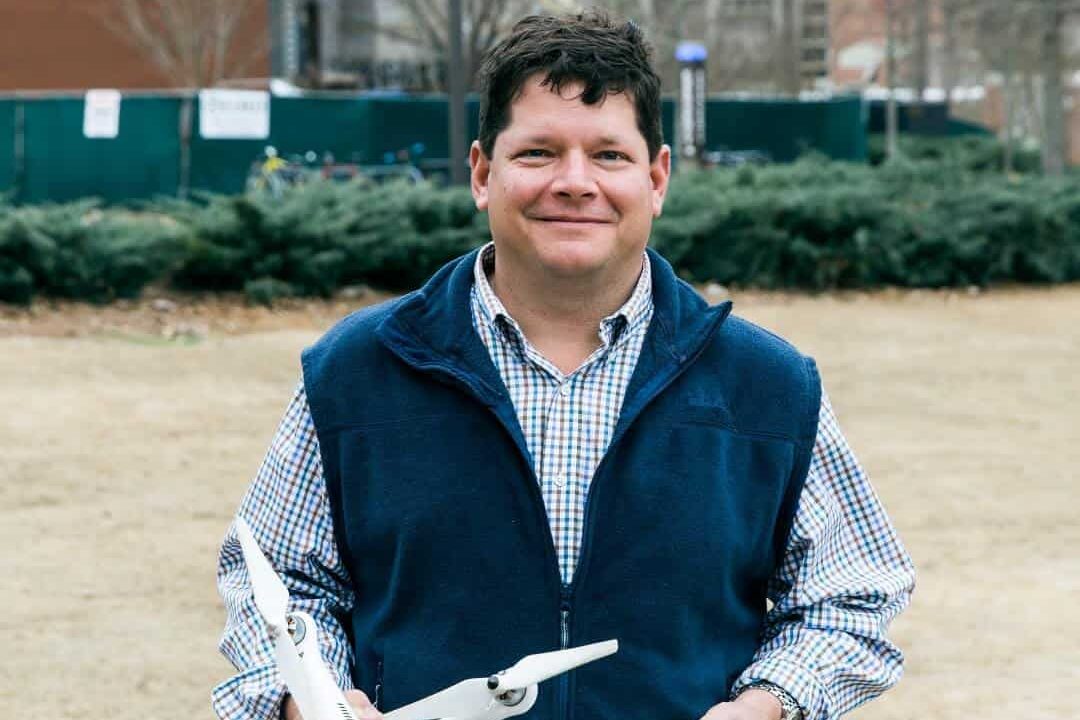Paul Holley is appointed new director of the Center for Construction Innovation and Collaboration

Paul Holley, professor in the McWhorter School of Building Science and John Wilborn Endowed Professor for Senior Faculty, was recently named the new director of the Center for Construction Innovation and Collaboration (CCIC). After a 14-year stint in the construction industry, Holley (2002) begins his fourteenth year as a faculty member in the school.
The CCIC, established at Auburn University in November of 2010, focuses on innovative and collaborative approaches to real problems related to construction products and processes. The Center brings together faculty, students, industry representatives, product producers and others to formulate effective and innovative solutions—a place where technology, experience and cutting-edge ideology work together. “While there are several academic centers and entities that support and foster innovation and collaboration, we are perhaps the only one specifically associated with a construction management program,” said Holley.
“I hope to build on the successes of the first five-years of the Center,” said Holley. “I want to expand its breadth within the college. One of the highlights of the center is to award research grants to faculty members for innovative research. I would like to make the competitive grants open to all the schools in the college, with special consideration given to projects that include student researchers working to solve real construction problems.”
Some of the programs that CCIC offers include Studio+Build, and the Unmanned Aircraft Systems initiative. Holley has worked with Studio+Build for the past eight years. Considered the signature program of the Center, Studio+Build is widely believed as a model of collaborative, interdisciplinary activity that is embedded in the teaching missions of several academic departments.
The Unmanned Aircraft Systems initiative, the most recent activity, with its associated technologies of LIDAR, photogrammetry, laser scanning, etc., has wide ranging potential for CCIC’s leadership, growth of resources and the ability to attract external funding from a diverse group of industries.
Much of the research and work generated by faculty that can add value to the construction industry, have been sponsored by CCIC. BSCI faculty have worked in areas such as virtual and augmented reality, HVAC impact on work environment (vocal ergonomics), feasibility of prefabrication in the construction industry, impact of social media in the construction industry, pervious concrete, and lean principles.
“Paul comes to the position as Director of the Center for Construction Innovation and Collaboration following a leadership role as the chair of Master of Integrated Design and Construction,” said Richard Burt, McWhorter Endowed Chair and the School Head. “In both this role and his participation in the colleges’ Studio+Build partnership between the Schools of Building Science & Industrial and Graphic Design, he has championed collaboration between faculty and students from different disciplines. I am convinced that Paul will carry on the excellent work Professor Steve Williams did in establishing the center and will take it to a higher level that will benefit the school, college, university and the construction industry.”
A major portion of the center’s budget is provided by the Alabama Construction Industry Fund (CIF), and additional funds and support have come from strategic partners such as construction firms, equipment manufacturers, suppliers, consulting firms, software vendors, etc. Holley said that one of his goals is to enlist the support of more companies to support the work done by faculty and students in the center.
In addition to conducting and supporting projects that fulfill industry partners, the Center helps develop tools and devices to solve problems for industry, provides expertise, processes, and develops and adapts technologies to industry-specific requirements. In fact, twenty six percent of all invention disclosures submitted to AU Office of Technology Transfer in FY 2014 were submitted by the Center.
“The appointment of Paul Holley to lead the CCIC represents the natural next step in the further development, sophistication, and distinction of all the activities associated with this inquiry-innovation-incubator,” said Vini Nathan, dean and McWhorter Endowed Chair in the CADC.
The CCIC, according to Nathan, is one of the signature elements of the CADC, and is an effective catalyst for collaboration between faculty, students, and programs across the CADC. “Through carefully created projects and initiatives, the CCIC provides rich opportunity spaces for the seamless integration of multiple interests and strengths in the CADC,” Nathan added.
See more in:
Accolades,
Faculty
Related people:
Paul Holley,
Vini Nathan